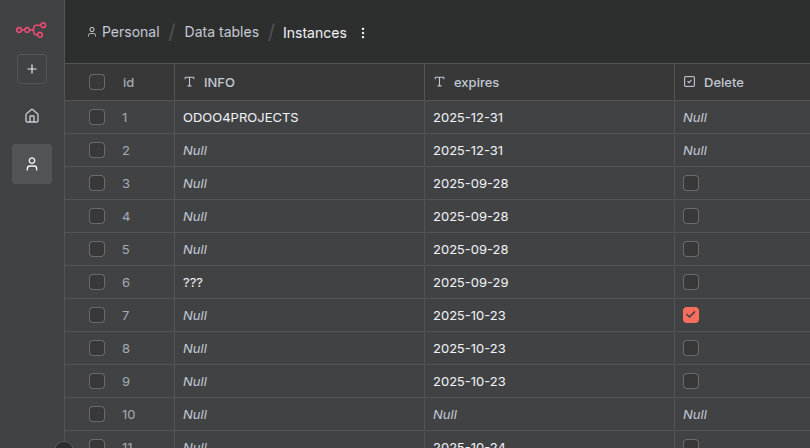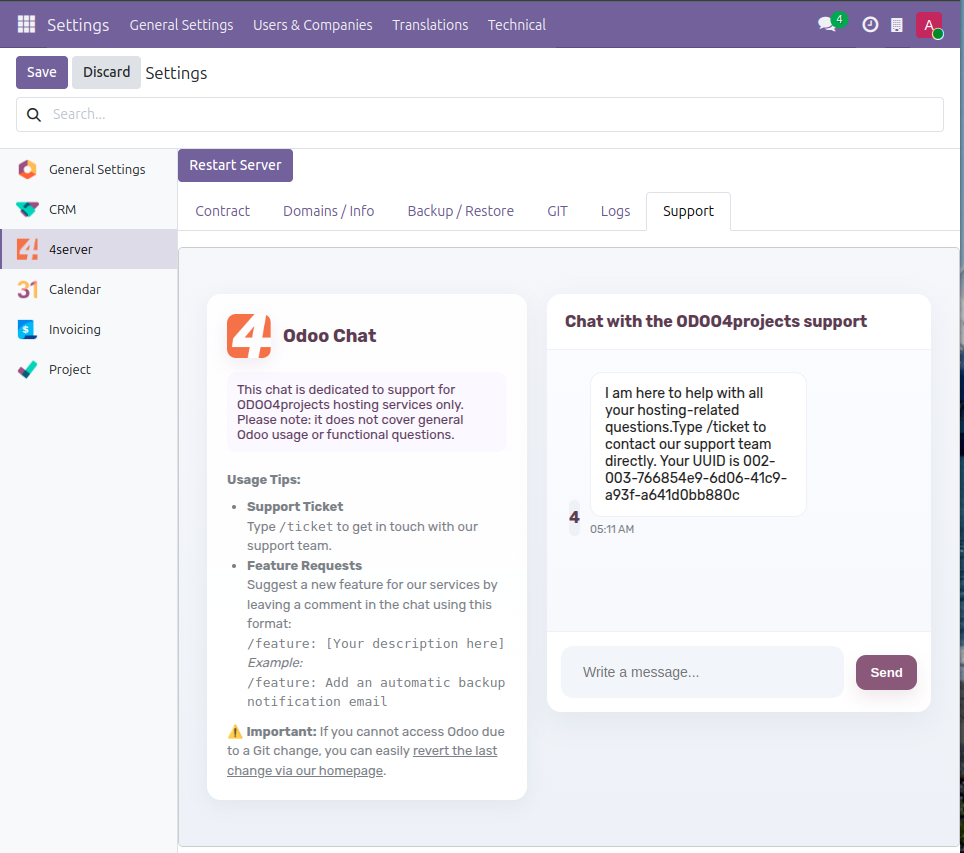Agentic AI in Open Source ERP: Increasing Efficiency for SMEs with AI-Powered Solutions
Author: Mark Gutmann
In an increasingly digitalized business world, small and medium-sized enterprises (SMEs) face the challenge of keeping up with technological advancements—without losing sight of cost efficiency and user-friendliness.
The integration of agentic AI into a company’s ERP (Enterprise Resource Planning) system opens up entirely new possibilities, both for internal processes and customer interactions. Beyond boosting efficiency, process innovations here can give rise to entirely new business models.
Compared to traditional ERP solutions, the use of AI not only increases efficiency but also improves user experience. Especially for SMEs, which often operate with limited resources, agentic AI offers an opportunity to automate repetitive tasks and give employees more time for strategic activities.
Agentic AI: What’s Behind the Concept?
Agentic AI describes AI systems that are capable of independently executing tasks, making decisions, and optimizing processes—in real time. In the context of ERP, this means the AI doesn’t just process data but actively contributes to value creation.
Instead of relying on a single, universal AI, specialized agents can be deployed for different tasks. For example, one AI agent can automatically process invoices, while another manages customer inquiries in the CRM or optimizes inventory levels. These agents communicate with the ERP system via seamless API integration, analyze data in real time, and make intelligent decisions, making business processes more efficient and less error-prone.
The specialization of these AI agents can be achieved in two ways: either through Retrieval-Augmented Generation (RAG), where the AI is specifically provided with relevant documents and information, or by training custom models using fine-tuning. While RAG systems enable quick adaptation by incorporating external knowledge sources into their responses, fine-tuning allows for deeper integration by tailoring the model specifically to the business processes of the company. These methods ensure that AI agents make precise, context-aware decisions that are optimally tailored to the individual requirements of a business.
Example 1: Agentic AI for Training and Supporting Internal Users
Implementing a new ERP system presents many companies with the challenge of quickly and efficiently familiarizing their employees with the new platform. This is where agentic AI solutions come into play, significantly simplifying not only onboarding but also ongoing user support. Instead of spending days reading operating manuals or participating in extensive training sessions, internal users can access interactive, AI-driven training modules.
The AI agents act as personal digital assistants, providing users with step-by-step guidance in real time. They can answer questions about specific features, explain processes, or even guide users through complex workflows—directly within the ERP system. If a user, for example, doesn’t know how to create a new invoice or generate certain reports, the agent can provide immediate assistance without the need for additional research.
Furthermore, AI agents enable personalized learning paths tailored to the individual needs and knowledge levels of users. Through integration with communication systems such as email or chat, they can also proactively provide tips—for example, about new features or best practices. This significantly reduces onboarding time and ensures users can leverage the full potential of the ERP system.
Example 2: Agentic AI in the CRM Module – Automating Administrative Sales Tasks
A common problem in sales is the lack of maintenance of the CRM (Customer Relationship Management) system, as sales staff are often too busy to enter new customer data or update existing information. Agentic AI solutions can provide targeted relief by largely automating administrative activities.
For instance, AI agents can automatically extract relevant customer data from emails, meetings, or phone calls and enter it directly into the CRM system. Through smart interfaces, such as integration with the email server, incoming messages can be analyzed and key information—like contact data, appointments, or inquiry requests—can be independently captured.
Additionally, AI agents can actively support sales staff by sending reminders for outstanding entries or automatically generating follow-up suggestions. This automation not only improves CRM data quality but also frees up valuable time for sales staff, allowing them to focus more on building customer relationships and the sales process.
Example 3: AI-Powered HR Management Assistant
The AI assistant makes it easier for HR departments to manage applications, onboard new employees, and foster talent development. For example, the AI can analyze application documents and automatically suggest suitable candidates for open positions by matching key skills, experience, and job requirements. For onboarding, the AI creates customized training plans based on the new employee’s individual needs. AI-driven recommendations can also be made for personal career development or training. This saves time and increases efficiency across all HR processes.
Example 4: AI for Financial Analysis and Forecasting
This tool uses machine learning to analyze historical financial data and generate precise forecasts for the company, such as revenue trends, cost structures, or liquidity planning. The AI can detect anomalies in the data—such as unusual expenses or payment flows—and automatically notify the relevant staff. Additionally, the system proposes optimization measures, such as reallocating budgets or adjusting spending plans. This application supports decision-makers in making informed choices and securing the company’s financial stability.
Example 5: Transcription App for Customer Service
The transcription app uses AI to transcribe incoming customer service phone calls in real time. During the conversation, the AI automatically analyzes the content and structures it into relevant sections—such as customer concerns, solution approaches, or open issues. After the call, the transcription is seamlessly integrated into the CRM system and added to the customer’s contact history. The AI can also provide a summary of the conversation for quick access by employees, making conversation contents immediately available to other departments, such as sales or support. Additionally, the app can recognize and tag important keywords (e.g., “complaint”, “discount”, “technical issue”), enabling quick follow-up. This reduces administrative workload for employees and increases transparency and traceability of customer interactions across the entire company.
A Hierarchical AI Chatbot System with Generalist and Vertical AI Agents
Due to the variety of applications (and thus users and their requirements), the idea of a hierarchical AI chatbot system was developed—consisting of a generalist “first-level bot” and specialized “vertical AI agents.” This combines the advantages of broad, generalist capabilities with deep expertise and modular specialization. This structure provides a tailored and efficient user experience for different target groups, such as customers, internal users, or prospects.
Advantages and Operation of the Multi-Level AI Approach
• Generalist First-Level Bot: The top-level AI chatbot serves as a universal entry point for users and answers general questions like “Which modules does the ERP system offer?” or “How can I contact support?”. It seamlessly forwards specific inquiries to the relevant vertical AI agents. Its key feature is the ability to identify the appropriate bots based on the question and the available specialized agents.
• Vertical AI Agents with Deep Expertise: These agents specialize in individual ERP modules (e.g., CRM, marketing, logistics) and possess in-depth process knowledge, which they combine with the specific terminology and jargon of their respective domains. This enables them to provide precise answers, explain complex workflows, or solve problems. They also access data from adjacent modules to understand and support cross-functional processes (e.g., integration between logistics and customer service).
• Seamless Handoffs: A central advantage of this architecture is the seamless handoff between the generalist bot and the vertical bots. The first-level bot identifies the relevant module and routes the inquiry directly to the appropriate vertical agent, passing along all previous communication content. This allows the vertical agent to enter the context without the user having to repeat their request, preventing unnecessary duplication and ensuring a smooth user experience.
Data Protection and Effort
• License-free open source LLMs can be used and hosted locally or in a preferred data center in compliance with GDPR.
• New AI-optimized hardware already enables powerful interactions with AI agents at lower financial cost.
Integration and Data Flow
• Vertical AI agents require access to relevant data and processes of their ERP modules.
• A central database or API interface ensures data exchange between bots and ERP modules.
Context Awareness and Handover
• The first-level bot must accurately analyze user requests in order to forward them correctly.
• A robust NLP system/LLM is required to understand context and intention.
• A central communication memory enables vertical bots to build upon previous communication.
Modularity and Scalability
• The architecture must be modular so that new vertical AI agents can be easily added.
• The first-level bot should be regularly updated to be aware of available agents and their competencies.
Domain-Specific Training
• Vertical AI agents require training on domain-specific data to understand technical language and processes.
• Regular updates are necessary to reflect version changes and new features of the ERP platform.
User-Friendliness and Feedback
• An intuitive user interface and the integration of user feedback improve the answer quality and relevance of the bots.
Mark
Gutmann is a freelance AI manager (IHK), application consultant, and
author.
After studying business administration and
linguistics, he spent 25 years in sales and consulting for leading CX
software companies in the field of intelligent process
automation.
Contact:








